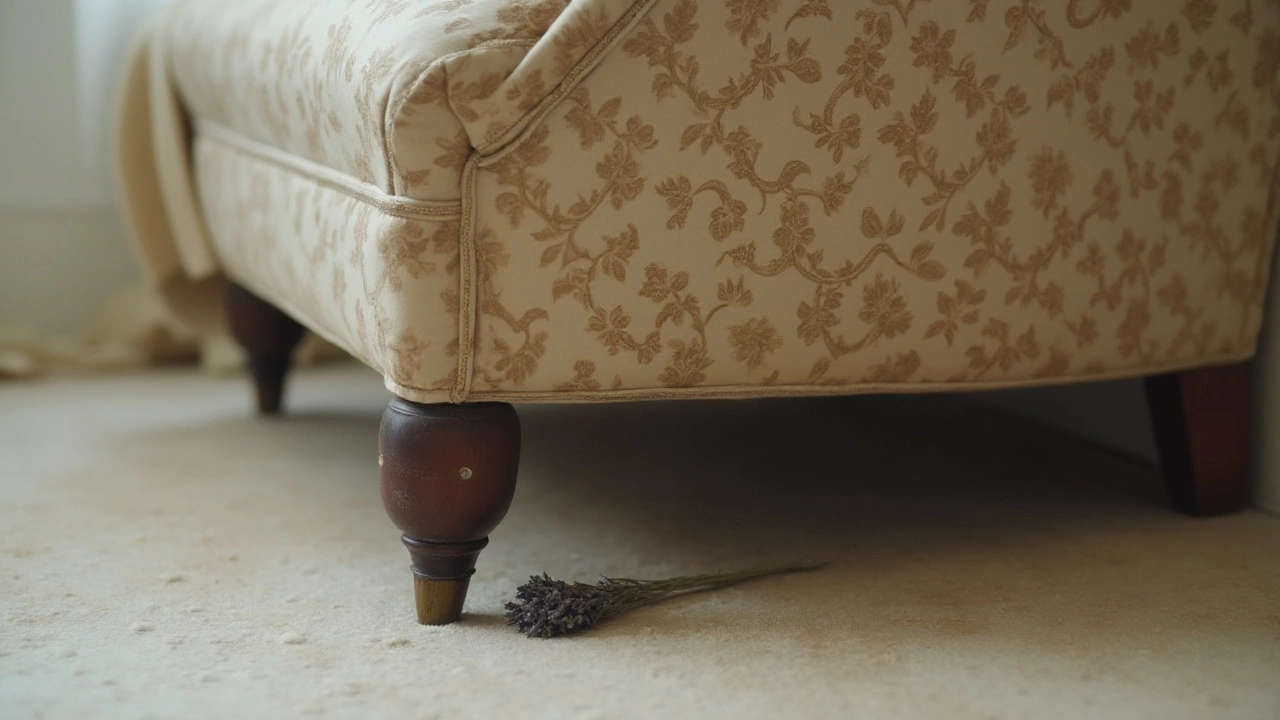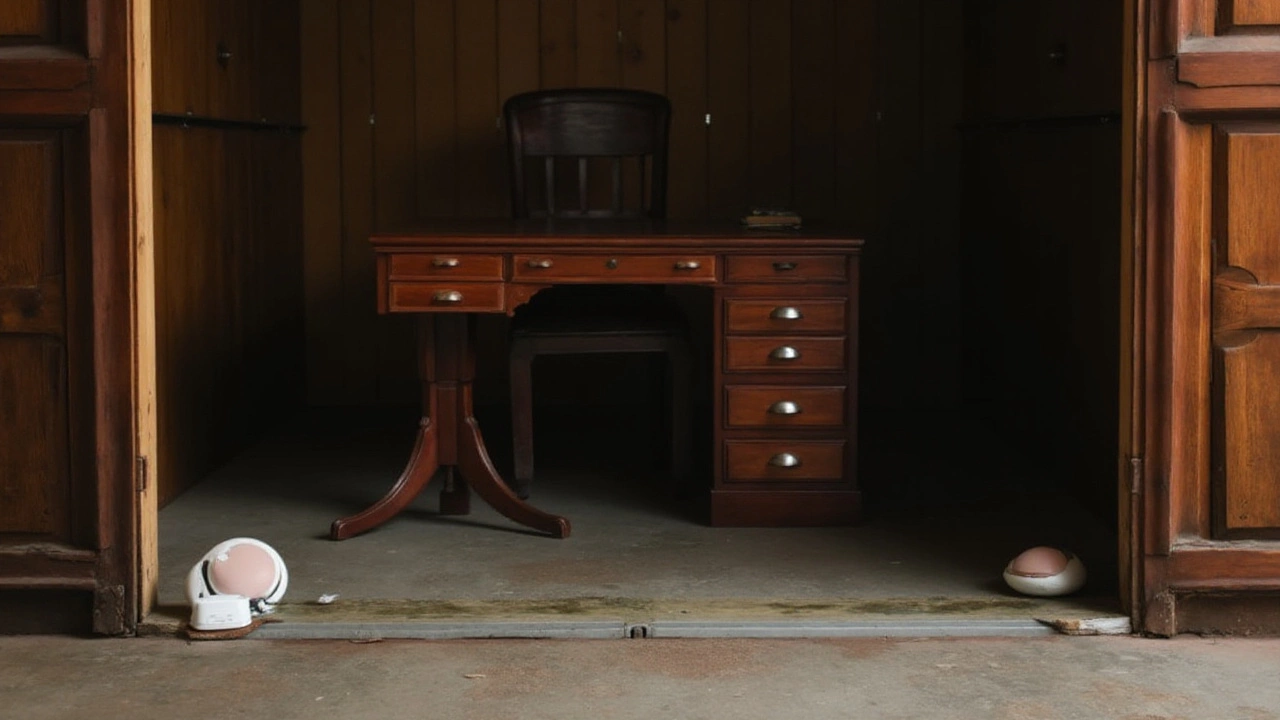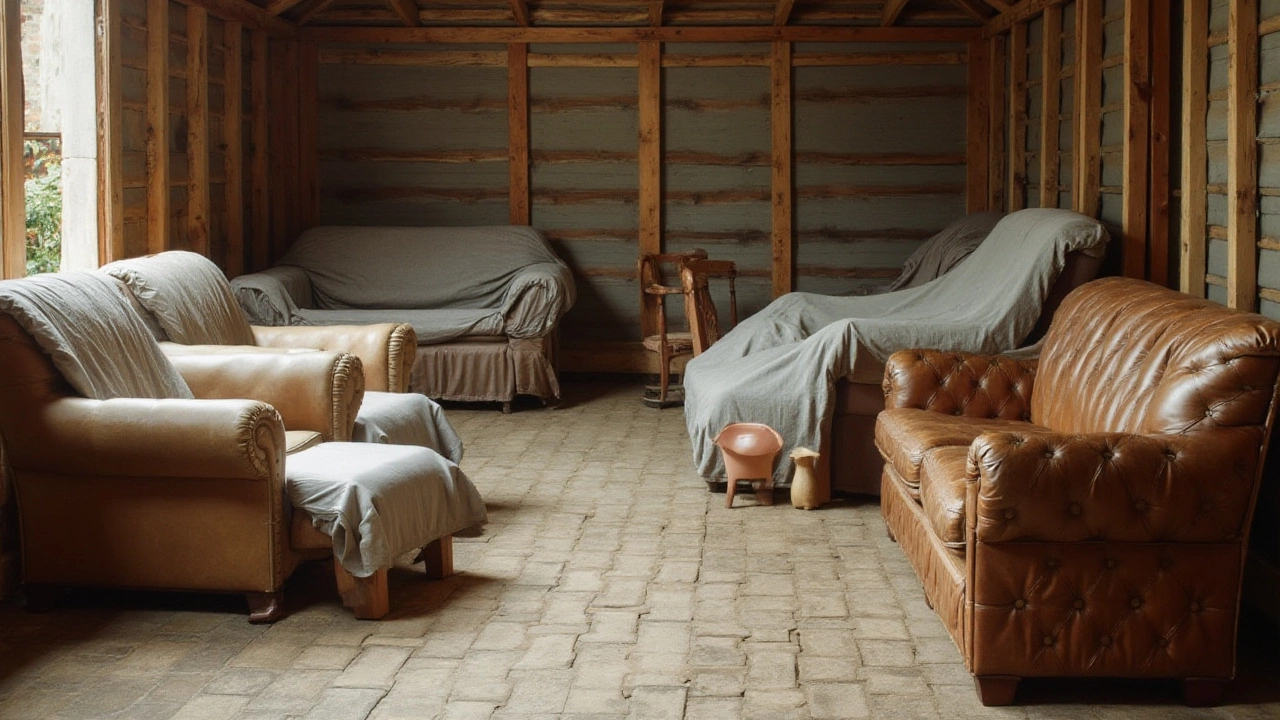Stowing your furniture away for a spell might seem straightforward, yet it demands a nuanced approach when dodging the nuisance of mice. These little critters, with their keen gnawing tendencies, have quite the knack for wrecking household goods.
You'll find an assortment of strategies popping up, all aimed at keeping your treasures intact and rodents at bay. It's about choosing suitable storage that discourages unwelcome guests and preparing each piece with a touch of foresight.
Think of this like a layered defense—mixing up different methods to create an environment less appealing to mice. Whether that's using natural repellents or chemical deterrents, maintaining vigilance over time pays dividends.
Through practical steps and little-known tricks, this guide offers insights to arm yourself with the knowledge to protect your furniture and maintain its charm, free from the grasp of tiny teeth.
- Understanding the Risks Mice Pose
- Choosing the Right Storage Unit
- Preparing Your Furniture for Storage
- Natural and Chemical Deterrents
- Long-Term Maintenance and Monitoring
Understanding the Risks Mice Pose
Mice, despite their small size, can have a surprisingly large impact on your stored belongings. These furry intruders are known for their ability to squeeze through openings as small as a pencil's diameter, which means it's remarkably easy for them to slip into storage units seemingly well-sealed. Their incisors never stop growing, compelling them to gnaw constantly, and everything from soft upholstery to solid wood can fall victim to their relentless chewing.
One underestimated consequence of mice invasion is the contamination risk they pose. Their droppings, urine, and even nesting material introduce harmful bacteria to your furniture, potentially transferring diseases. This goes beyond mere damage, as it poses a genuine health risk when you decide to retrieve your stored items. Research indicates that a single pair of mice can produce up to two hundred droppings in a single day. This statistic underscores the importance of maintaining a pest-free storage environment.
Beyond physical degradation and health issues, there is the financial downside to consider. Replacing or repairing furniture that has suffered a mouse-induced fate can hit your wallet hard. A survey by pest control experts revealed that homeowners spend considerably on repairs following rodent infestations, with furniture among the most frequently affected items. It's not just about the visible damage either; hidden structural vulnerabilities often surface long after the mice have moved on.
Mice have been called "the invisible architects of destruction," a phrase coined by renowned wildlife ecologist Dr. Avery Milbourne. He emphasizes that the damage mice cause is often only realized once it's too late, particularly in storage where human presence is infrequent.
Understanding the subtle yet severe implications mice hold is crucial when opting to put your furniture in storage. Being armed with knowledge is your first line of defense and can be vital in ensuring that your cherished possessions remain in the best possible condition while out of sight.
Choosing the Right Storage Unit
When it comes to storing your prized possessions, picking the perfect storage unit can make all the difference. One critical factor to consider is mice prevention. Not all storage facilities are created equal, and some offer more robust pest control measures than others. It's essential to inquire about the facility's pest control policies since a reputable storage center should have a proactive strategy against rodents, which are known to cause extensive damage if left unchecked.
A climate-controlled storage unit can be especially advantageous for keeping furniture storage conditions optimal. While not explicitly designed to deter mice, the constant temperature and humidity levels can contribute to an environment that isn't conducive to mice habitation. Keep in mind that access is another factor; facilities with limited public entry points and surveillance cameras tend to have lower rodent infestations, as the attributes make it difficult for mice to gain entry.
Location matters tremendously in this quest. Urban storage centers might have higher rodent activity compared to rural sites. Therefore, assess the general cleanliness of the area surrounding the storage unit. A tip shared by many in the pest control industry is to physically visit potential storage spaces. Look for signs of previous infestations, such as droppings or gnaw marks, which can be telltale indicators of a larger problem.
"A proactive approach is crucial," suggests Laura Von Bethlehem from The Pest Management Institute. "Customers ought to inquire whether storage units are inspected routinely, and whether there’s an integrated pest management system in place."
Before you make a final decision, analyze the structural integrity of the storage unit itself. Naturally, a unit with sealed floors, walls, and ceilings offers a better fortress against unwanted invaders. Assess the door seals; gaps provide entry points for nimble creatures. If possible, select units with metal doors and frames—this sturdy construction is harder for mice to chew through.
Don't forget to inspect any ventilation systems, as these can unintentionally serve as pathways for rodents. Some facilities install mesh grates or screens to prevent mice from infiltrating through air ducts. While these measures may seem meticulous, they play a significant role in ensuring storage tips are fully adhered to, securing your furniture and other valuables for the long haul.

Preparing Your Furniture for Storage
Before you shut the door on your belongings, there's a bit of groundwork to cover. When aiming to protect your furniture from the mischief of mice, the process begins with a thorough cleaning. Dust, dirt, and food remnants can attract pests, turning your storage unit into an impromptu feast. So, it's essential to wipe each surface and vacuum any upholstery or cushions, ensuring no crumbs are left behind. This deep clean not only wards off mice but also preserves the integrity of the materials, keeping them fresh.
Once your items are clean, the next step involves dismantling any larger pieces. If your furniture can be disassembled, it’s wise to do so—it makes packing more efficient and reduces the chance of breakage. Smaller, more manageable pieces tend to bear less stress, and as a bonus, they’re less appealing to rodents seeking shelter. For instance, removing table legs or headboards can help save space and secure items properly.
After disassembling, comes the wrapping stage. Proper wrapping acts like a shield, offering layers of defense against pests. Use durable materials like bubble wrap or furniture pads, covering each piece thoroughly. Pay special attention to entry points or seams where a mouse might initiate its gnawing. And if you’ve ever wondered, plastic wrap can come in handy too, especially for those pieces vulnerable to humidity. However, avoid using cardboard as it offers a fantastic home and meal for mice, effectively inviting them in.
"In storage environments with frequent pest issues, a thorough sealing and smart material choices can significantly reduce risks,” suggests the experts at Pest Management Journal.
Placement inside the storage unit is just as vital as the prep work. Elevate your storage items using pallets or shelving units to prevent direct contact with the ground. Not only does this improve air circulation – a boon for combating mold and mildew – but it makes accessing your items easier without attracting pests. Mice are dexterous climbers, yet giving them fewer places to hide or nest cuts down their interest significantly.
It's also wise to leave a bit of space between the walls of the storage unit and your furniture. This gap not only creates an aisle for regular inspections but keeps moisture at bay. Speaking of moisture, including a trusty desiccant or a dehumidifier can help maintain low humidity levels, a condition less favorable for rodents. While these steps might seem meticulous, each one contributes to a pest-resistant fortress for your treasured home goods. Protecting furniture demands proactive measures, yet with these strategies, you're a step ahead in ensuring your items remain unscathed until you're ready to use them again.
Natural and Chemical Deterrents
When it comes to safeguarding your beloved furnishings from the unrelenting persistence of mice, employing a mix of natural repellents and chemical deterrents can be remarkably effective. These methods, often used together, create an inhospitable environment for these critters, deterring them from nesting and causing damage. Natural options include essential oils like peppermint oil, which mice despise due to its potent scent. A few drops strategically placed on cotton balls around your storage areas can act as a natural barrier. Interestingly, mice also tend to avoid anything with a strong hint of cloves or cayenne pepper. Sprinkling these spices can disrupt their usual paths and keep them away.
On the chemical side, there are commercially available rodenticides and repellents that provide a robust line of defense. However, relying on chemical methods requires caution, especially if there are pets or children who might come into contact with these substances. Products designed as sticky traps or electronic repellents can also serve as an effective measure without introducing harmful toxins into your environment. It's essential to replace any traps regularly to maintain their effectiveness and ensure safety.
"Effective strategies to prevent rodent intrusion often involve a combination of exclusion tactics and repellents," says pest control specialist Dr. Laura Johnson.
Another clever approach is to employ sound deterrents. Ultrasonic devices emit high-frequency sounds inaudible to humans but unsettling to rodents, encouraging them to seek quieter pastures. While some swear by these gadgets, their effectiveness can vary based on the layout of the space and the severity of the infestation. Setting multiple units around the perimeter of your storage area can increase success rates.
If you're storing items for extended periods, routine checks become paramount. Scour for signs of rodent activity, like droppings or gnaw marks, and promptly address any breaches. Regular airflow and reduced humidity levels can also discourage infestation by making the storage environment less favorable for rodents. Lastly, collaborating with a professional pest control service for periodic inspections can further bolster your defenses against these tiny invaders, ensuring your furniture storage remains pristine and mouse-free.

Long-Term Maintenance and Monitoring
When it comes to the long-term protection of your furniture in storage, implementing a consistent system for maintenance and monitoring is crucial. Neglecting these routines can turn your once-spotless armchairs and tables into a buffet for rodents. One effective approach is to conduct regular inspections, ideally every few weeks. Set a routine that allows you to check for any new signs of mouse activity, such as droppings or gnaw marks. This may seem tedious, but it ensures that issues are caught and dealt with before they become severe. During these inspections, it's wise to refresh any deterrents you've put in place like peppermint oil sachets or ultrasonic devices, which gradually lose effectiveness over time.
Technology can also play a pivotal role in keeping your storage area mouse-free. Many modern storage units offer security systems not only for human intruders but also for small pests. Opt for units with electronic monitoring systems that alert you to sudden temperature changes or unexpected activity that might indicate a breach. Additionally, if possible, install small, discrete cameras for a constant visual check. Utilizing technology not only provides peace of mind but also makes it easier to track patterns and effectively strategize for the future.
One of the best habits you can adopt is to maintain cleanliness both inside and around the storage area. Surprisingly, less clutter means fewer places for mice to hide. Ensure that aisles are clear and that any packaging materials are disposed of promptly. Keeping the storage unit clean deters mice, who are less likely to settle in an environment that offers less cover and practically no opportunity for nesting. Moreover, regular sweeping and vacuuming help eliminate any food crumbs or residues that might have inadvertently been brought into the space.
Consider bringing in backup when the going gets tough. A professional pest control service can be invaluable, particularly in older facilities or cities where rodent populations are dense. Consult these experts for their recommendations on the best preventive measures tailored to your region's specific challenges. Some companies even offer ‘rodent-proofing’ services, which include sealing any entry points that mice could exploit.
“Mice can squeeze through a hole the size of a dime,” notes Dr. Rick Anderson, an expert in pest behavior. “Sealing those entry points is half the battle.”Taking these professional steps not only prevents future infestations but also enhances the lifespan of your furniture.
Data suggests that units with regular professional inspections have a 45% lower chance of infestation. It’s a simple step that offers significant returns. Lastly, never underestimate the power of communal wisdom. Stay in touch with other renters or facility staff who might share valuable insights on the best practices for that specific storage location. Shared experiences and solutions can be unexpectedly helpful.


Write a comment